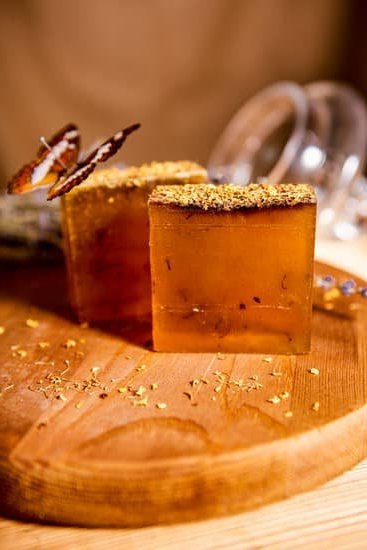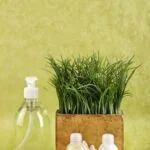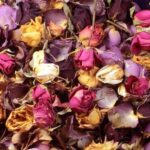Aromatherapy and herbalism are two practices that have gained popularity for their natural healing properties. Aromatherapy involves the use of essential oils extracted from plants to promote physical and psychological well-being through inhalation or topical application. On the other hand, herbalism is the use of plants’ leaves, stems, flowers, roots, and seeds for medicinal purposes. The question arises: is aromatherapy part of herbalism?
While both aromatherapy and herbalism utilize plant-based materials for therapeutic benefits, they differ in their methods of application and the parts of the plant used. Aromatherapy primarily focuses on essential oils, which are highly concentrated extracts obtained through methods like distillation or cold pressing. These oils are known for their aromatic properties as well as their healing effects on the body and mind.
Herbalism, on the other hand, encompasses a wider range of plant components beyond just essential oils. It includes the use of whole herbs or specific parts of plants to create remedies like teas, tinctures, and salves. Herbalists often combine different herbs to address specific health concerns or conditions. Despite these distinctions, there is an undeniable overlap between aromatherapy and herbalism in terms of using plants for medicinal purposes.
Historical Background of Aromatherapy and Herbalism
Aromatherapy and herbalism have both been used for centuries as natural healing practices, each with its own rich historical background. Aromatherapy, which involves the use of essential oils derived from plants for therapeutic purposes, dates back thousands of years to ancient civilizations such as Egypt, China, and India. These cultures recognized the powerful healing properties of plant essences and utilized them in rituals, medicine, and spiritual ceremonies.
Herbalism, on the other hand, is the practice of using whole plants or plant extracts for medicinal purposes. It has also been practiced for centuries by various cultures around the world. From ancient Greek physicians like Hippocrates to traditional Chinese medicine practitioners, herbs have been valued for their medicinal properties and holistic approach to healing.
Roots in Ancient Traditions
Both aromatherapy and herbalism share deep roots in ancient healing traditions. In Egypt, aromatic botanicals were used in embalming rituals while herbal remedies were recorded in papyrus scrolls dating back to 1550 BCE. Similarly, traditional Chinese medicine has long relied on herbs and aromatics to restore balance and treat ailments. These early practices laid the foundation for what would eventually become known as modern aromatherapy and herbalism.
Divergence in Approaches
Despite their shared history, aromatherapy and herbalism have distinct approaches to healing. Aromatherapy primarily focuses on the use of volatile plant oils to affect mood or physical well-being through inhalation or topical application. Herbalism encompasses a wider range of plant-based remedies including teas, tinctures, poultices, and supplements that are ingested or applied externally. While both practices harness the healing power of plants, they vary in their methods of preparation and application.
Key Differences Between Aromatherapy and Herbalism
Aromatherapy and herbalism are often seen as related practices due to their focus on utilizing natural substances for health and wellness. However, there are key differences between the two that set them apart.
Aromatherapy primarily involves the use of essential oils extracted from plants to promote physical and psychological well-being through inhalation or topical application. On the other hand, herbalism encompasses a broader approach that utilizes various parts of plants, such as leaves, roots, and flowers, for medicinal purposes through ingestion or external application.
One significant difference between aromatherapy and herbalism is the form in which plant-based substances are used. In aromatherapy, essential oils are highly concentrated extracts obtained through methods like steam distillation or cold pressing. These volatile oils carry the characteristic fragrance and therapeutic properties of the plant they are derived from.
In contrast, herbalism involves using whole or parts of plants to create teas, tinctures, salves, and capsules for consumption or topical use. This distinction in preparation methods influences how these natural remedies are applied and their potential effects on the body.
Another notable difference between aromatherapy and herbalism is their primary modes of application. Aromatherapy mainly relies on inhalation techniques like diffusing essential oils in the air or using them in baths to harness their aromatic benefits. These scents can impact mood, reduce stress, alleviate pain, and support overall well-being through olfactory stimulation.
Herbalism typically involves oral consumption of plant-based preparations like teas or supplements to address specific health concerns internally or topically apply herbal preparations for localized relief. While both practices share a holistic approach to healing with botanicals, their methods of delivery emphasize distinct routes of administration for therapeutic outcomes.
| Differences Between Aromatherapy and Herbalism | Key Points |
|---|---|
| Form of Substances Used | Aromatherapy uses concentrated essential oils while herbalism uses whole or parts of plants. |
| Modes of Application | Aromatherapy focuses on inhalation techniques while herbalism includes ingestion and external application. |
Common Uses of Aromatherapy
Aromatherapy is the use of essential oils extracted from plants to promote health and well-being. These essential oils are often diluted and applied to the skin, inhaled, or used in baths. Aromatherapy has been used for centuries to treat various physical and emotional ailments. Some common uses of aromatherapy include stress relief, relaxation, pain management, improved sleep quality, and boosting mood.
Stress Relief
One of the most popular uses of aromatherapy is for stress relief. Essential oils like lavender, chamomile, and ylang-ylang are known for their calming properties. Inhaling these fragrances or using them in a diffuser can help reduce feelings of anxiety and tension. The act of breathing in these soothing scents can have a direct impact on our nervous system, promoting relaxation and reducing stress levels.
Improved Sleep Quality
Another common use of aromatherapy is to improve sleep quality. Essential oils such as valerian, cedarwood, and bergamot are known for their sedative properties that can help promote a restful night’s sleep. Incorporating these oils into your bedtime routine by using them in a diffuser or adding a few drops to your pillow can help calm the mind and body, making it easier to fall asleep and stay asleep throughout the night.
Mood Enhancement
Aromatherapy is also widely used for mood enhancement. Citrus scents like lemon and orange are known for their uplifting properties that can boost mood and increase energy levels. On the other hand, floral scents like rose and jasmine are commonly used to evoke feelings of happiness and relaxation. By incorporating these essential oils into your daily routine through inhalation or topical application, you can positively impact your emotional well-being.
Common Uses of Herbalism
Herbalism, also known as herbal medicine or phytotherapy, is the practice of using plants and plant extracts to promote health and treat various medical conditions. Herbal remedies can come in many forms such as teas, tinctures, capsules, and topical preparations. Many cultures around the world have a long history of using herbs for their healing properties.
One of the common uses of herbalism is to support overall wellness and boost the immune system. Herbs like echinacea, elderberry, and astragalus are often used to help prevent colds and flu or shorten their duration. Herbal teas made from chamomile, peppermint, or ginger can also provide soothing relief for minor ailments like indigestion or headaches.
Another popular application of herbalism is in managing stress and promoting relaxation. Herbs such as valerian root, passionflower, and lemon balm are known for their calming effects on the nervous system. These herbs can be taken as supplements or used in aromatherapy to reduce anxiety, improve sleep quality, and enhance overall mental well-being.
| Herb | Common Use |
|---|---|
| Echinacea | Boost immune system |
| Lemon Balm | Calming effects on nervous system |
Overall, herbalism offers a holistic approach to health by utilizing the natural healing properties of plants. It is important to consult with a qualified herbalist or healthcare provider before incorporating herbs into your wellness routine, especially if you have existing medical conditions or are taking medications. By understanding the common uses of herbalism and how it complements other healing practices like aromatherapy, individuals can create a well-rounded approach to self-care that addresses both physical and emotional well-being.
Overlapping Practices
Aromatherapy and herbalism are two distinct practices that share a common goal of promoting holistic well-being and improving overall health. While aromatherapy focuses on the therapeutic use of essential oils extracted from plants, herbs, and flowers, herbalism encompasses the use of whole plants or plant extracts for medicinal purposes. Despite their differences in application, both aromatherapy and herbalism are deeply rooted in traditional healing practices that have been passed down through generations.
Here are some key points to consider when exploring the connection between aromatherapy and herbalism:
- Aromatherapy primarily relies on the volatile aromatic compounds found in essential oils, which are extracted through processes like steam distillation or cold pressing. These potent oils can be used topically, through inhalation, or even ingestion (with caution). On the other hand, herbalism utilizes various parts of plants such as leaves, roots, stems, flowers, or seeds to make tinctures, teas, poultices, or capsules for internal and external use.
- Both aromatherapy and herbalism emphasize the importance of using natural remedies to support the body’s innate healing abilities. Essential oils like lavender for relaxation or peppermint for digestion align with herbal remedies like chamomile tea for calming nerves or ginger capsules for nausea relief. By harnessing the power of plant-based ingredients, both practices aim to address physical ailments while also considering mental and emotional well-being.
- In essence, aromatherapy can be considered a subset of herbalism due to its reliance on plant-derived substances for therapeutic benefits. While not all herbs used in herbalism contain essential oils suitable for aromatherapy, many aromatic plants find their way into both practices. This overlap showcases how interconnected these two disciplines truly are in their approach to natural healing methods.
As practitioners continue to explore the synergies between aromatherapy and herbalism, they may discover new ways to enhance therapeutic outcomes by combining these complementary modalities. By understanding the unique strengths of each practice and how they can work together harmoniously, individuals can unlock a deeper level of healing potential that addresses mind, body, and spirit holistically. Integrating aromatherapy into herbalism practices offers a versatile approach that honors tradition while embracing innovation in natural health care strategies”.
Benefits of Integrating Aromatherapy and Herbalism
Aromatherapy and herbalism are two distinct practices that share a common goal of promoting health and well-being through natural means. While aromatherapy focuses on the therapeutic use of essential oils extracted from plants, herbalism utilizes various parts of plants, such as roots, leaves, and flowers, for their medicinal properties. Despite their differences, there are significant benefits to integrating aromatherapy into herbalism practices.
One of the main advantages of combining aromatherapy with herbalism is the synergistic effect it creates. When used together, essential oils and herbal remedies can enhance each other’s healing properties, leading to more effective treatment outcomes. This holistic approach allows for a broader spectrum of therapeutic benefits, addressing both physical and emotional aspects of health.
Another benefit of integrating aromatherapy into herbalism is the versatility it offers in terms of application methods. While herbal preparations like tinctures and teas are commonly ingested or applied topically, essential oils can be used in various ways, including inhalation, diffusion, and topical application. This diversity allows practitioners to tailor treatments to individual preferences and needs, increasing client satisfaction and overall effectiveness.
In addition to enhancing therapeutic outcomes and expanding application options, incorporating aromatherapy into herbalism practices can also improve the overall sensory experience for clients. The aromatic qualities of essential oils not only add pleasant scents to herbal remedies but also contribute to feelings of relaxation and emotional balance. By engaging multiple senses simultaneously, this integrated approach can create a more immersive healing experience for individuals seeking natural healthcare solutions.
How to Incorporate Aromatherapy Into Herbalism Practices
Aromatherapy can be a valuable addition to herbalism practices, enhancing the therapeutic benefits of herbs through the use of essential oils. By incorporating aromatherapy into herbalism, practitioners can create more holistic and personalized healing remedies for their clients.
One way to blend the two practices is by combining the use of herbal preparations with essential oils in various forms such as creams, ointments, and massage oils. This combination can amplify the healing properties of herbs and provide additional benefits through the inhalation of aromatic scents.
Another way to incorporate aromatherapy into herbalism practices is by using essential oils in diffusers or room sprays during consultations or therapy sessions. This not only creates a calming and relaxing atmosphere but also allows the client to experience the therapeutic effects of both herbal remedies and essential oils simultaneously. Additionally, incorporating aromatherapy into herbalism practices can also involve creating custom blends tailored to individual needs based on both traditional herbal knowledge and the principles of aromatherapy.
Moreover, incorporating aromatherapy into herbalism practices offers a more comprehensive approach to natural healing by addressing both physical and emotional well-being. The synergistic effects of combining herbs and essential oils can help alleviate a wide range of conditions, from physical ailments like headaches and inflammation to emotional issues like stress and anxiety.
By integrating aromatherapy into herbalism, practitioners can offer their clients a more holistic approach to health and wellness that targets the root cause of imbalances while supporting overall well-being.
Conclusion
In conclusion, the relationship between aromatherapy and herbalism is a complex and fascinating one. While aromatherapy focuses on the use of essential oils for therapeutic purposes, herbalism utilizes various parts of plants for medicinal benefits. Despite their distinct methods, both practices share a common goal: promoting health and well-being through natural remedies.
One key point to consider when discussing the relationship between aromatherapy and herbalism is that they often intersect in their use of plant-based products. Essential oils derived from plants are often used in both practices, showcasing how they can complement each other in a holistic approach to wellness. This integration of aromatherapy into herbalism expands the range of remedies available and enhances the healing potential of herbal preparations.
Overall, while aromatherapy is not typically considered a direct part of traditional herbalism, it undoubtedly plays a significant role in enhancing its principles and practices. By understanding the similarities and differences between these two natural healing modalities, practitioners can harness the synergistic benefits that arise from incorporating aromatherapy into herbalism. Ultimately, this integration underscores the interconnectedness and versatility of using plant-based therapies for health and wellness.
Frequently Asked Questions
What Is the Difference Between Aromatherapy and Herbalism?
Aromatherapy and herbalism are both natural healing practices, but they differ in their methods of application. Aromatherapy uses essential oils extracted from plants for therapeutic purposes, mainly through inhalation or topical application. Herbalism involves using different parts of plants, such as leaves, roots, and flowers, to create remedies like teas, tinctures, or capsules.
Are Essential Oils Part of Herbalism?
Essential oils can be considered part of herbalism because they are derived from plants. However, some herbalists prefer to work with the whole plant or specific plant parts rather than just the concentrated essential oil. Essential oils are highly potent and require careful dilution before use, which is an important consideration in herbalism practice.
Is Aromatherapy a Holistic Medicine?
Aromatherapy is often considered a holistic medicine because it aims to treat the person as a whole – physically, emotionally, and mentally. By using essential oils to promote relaxation, reduce stress, improve mood, and alleviate physical ailments, aromatherapy addresses not only the symptoms but also the underlying causes of health issues.
This approach aligns with the principles of holistic medicine that focus on treating the root cause rather than just managing symptoms.

Are you looking for a natural way to improve your health and wellbeing?
If so, aromatherapy may be the answer for you.




